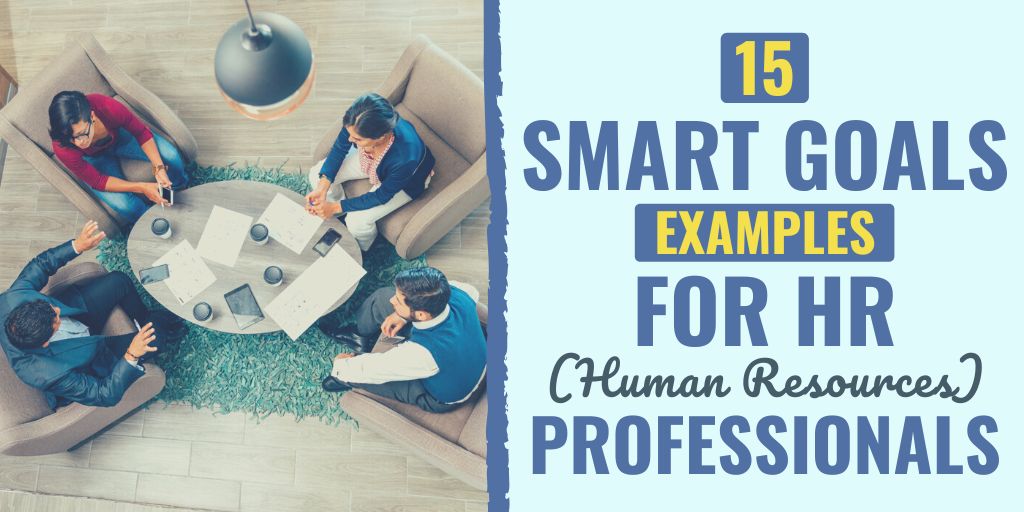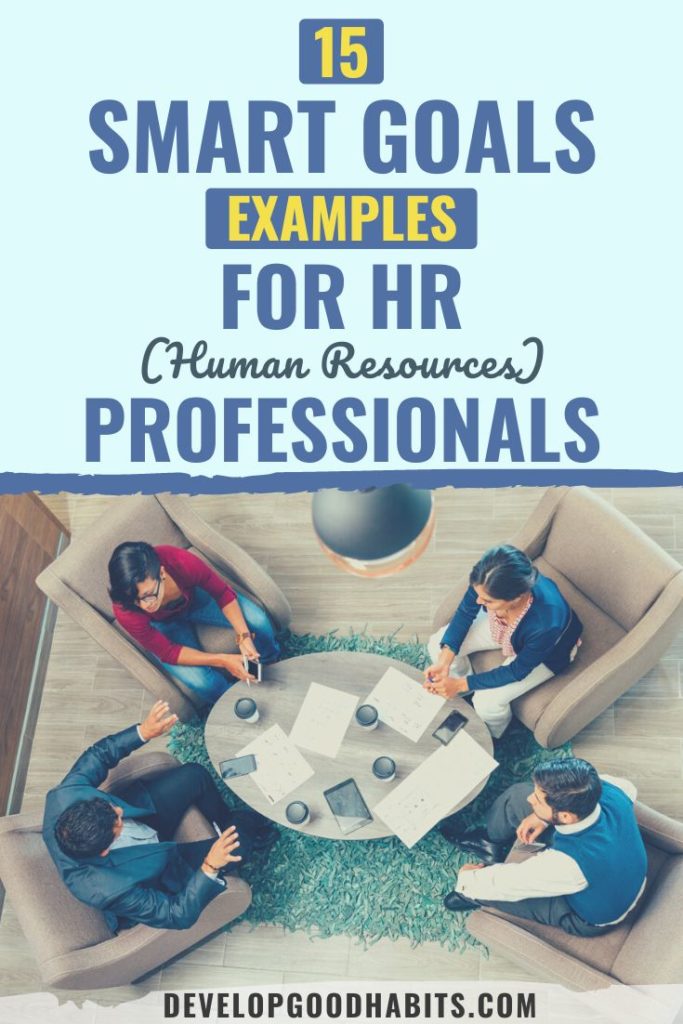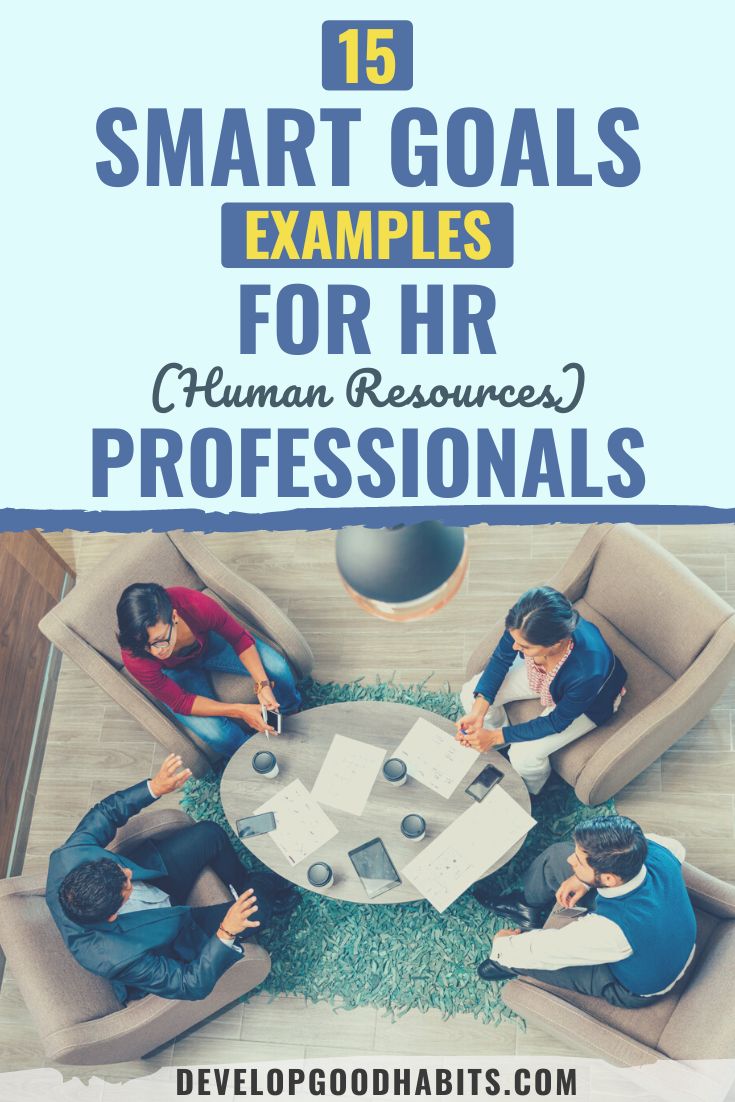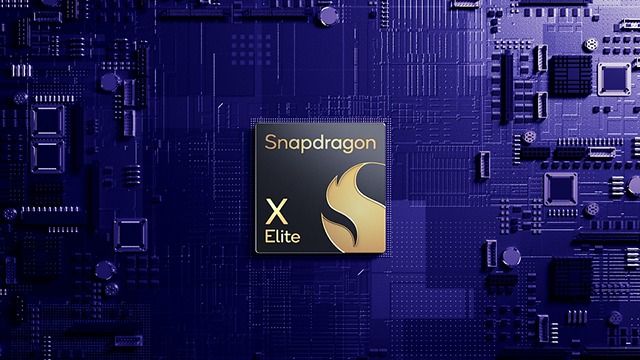
There might be affiliate links on this page, which means we get a small commission of anything you buy. As an Amazon Associate we earn from qualifying purchases. Please do your own research before making any online purchase.
HR professionals regularly face new challenges that require them to effectively find solutions while staying within the ethical framework. This demands constant learning. And like any professional, most entry- and mid-level HR employees would like to advance their career to senior or specialized positions.
Smart goals for HR professionals can help you achieve your main objective. This article will explain what SMART goals are, how to set them, and then provide you with 15 SMART goal examples useful for any HR professional.
What Are SMART Goals?
To learn how to set effective smart goals for HR professionals, you should first understand the SMART goal framework. “SMART” is an acronym for “Specific, Measurable, Achievable, Relevant, and Time-bound.” When your goals meet all these criteria, the chances of failure are minimal. And if even one of these criteria is not met, you may have trouble completing your objectives. So let’s take a closer look at each of the SMART goals criteria to determine why they’re essential.
Specific
Your goal should be narrow and detailed. For example, the statement “I will become rich” is vague and doesn’t specify how you’re going to earn money, how rich you want to get, or in what timeframe. Instead of setting a general goal of becoming rich, think of how you could achieve that. Your goal statement should answer the questions “Who?” “What?” “When?” “Where?” and “Why?” clearly, instead of sounding like wistful daydreams.
Measurable
Your goal progress should be measurable; otherwise, you may not know when the goal is achieved. Let’s take the previous example; the goal isn’t measurable, as “rich” is a vague concept. However, “I will earn $150,000 in the next five years” is a more specific and measurable statement. It’s even better when you have not only an endpoint but also milestones to judge by. This way, you can track progress at any point in your goal-achieving timeline and adjust your actions accordingly.
Achievable
This is crucial for maintaining your motivation. Unachievable goals lead to nothing but frustration. For example, setting an “I will become a CEO” goal right after getting a job is unrealistic. An achievable goal should be reasonable considering your skills, resources, and the given timeframe. Strive to break down general objectives into smaller goals. For instance, if your dream is to become the CEO of a company, set goals that will help you improve your work results and knowledge within the industry.
Relevant
When setting a goal, think of what your purpose or main objective is. There is a difference between goals and objectives. Your goals should align with the bigger picture. Knowing why you set a goal helps to maintain motivation. Furthermore, you don’t want to spend time and effort on a goal that doesn’t move you closer to your core objective.
Time-Bound
Goals can be broken down into lifetime, long-term, short-term, and stepping-stone goals. The lack of a clear deadline is one of the most common reasons people lose motivation and procrastinate, failing to achieve their goals. Time-bound goals keep you accountable for our progress or the lack thereof. A specified timeframe also helps to break down your general goals into smaller steps.
The SMART goal framework can be applied to any part of your life, be it work, hobbies, self-development, or finding your purpose. If you’d like to learn more about setting goals that genuinely work, check our ultimate guide to SMART goals.
Why SMART Goals Are Important for HR Professionals
HR professionals encounter numerous challenges at their job. Working with people is never easy or predictable – you need to know how to communicate, take a different approach with every person, resolve arguments, stay aware of ethical responsibilities, and be an expert in multitasking and organization. These qualities help HR professionals do their job and, often, progress their careers.
SMART goals can help an HR professional define which qualities they need to develop or improve to become a better expert and progress in their career. Trackable, measurable goals ensure that you can stay motivated and effectively achieve your primary objective, be it improving communication with colleagues or becoming the HR department manager.
On the other hand, if you have a history of failing to achieve your professional goals, the chances are good that they weren’t specific, time-bound, or achievable enough.
Here are some examples you can use to get started with SMART goals.
15 SMART Goal Examples for HR Professionals
1. Improve Conflict Resolution Skills
“Over the next six weeks, I will improve my conflict resolution skills by attending dedicated weekly seminars.”
S: This statement is specific, as it defines how you’re planning to improve your conflict resolution skills – by attending seminars focused on this topic.
M: This goal is measurable. Each attended weekly seminar provides you with new knowledge and can be viewed as a milestone for professional improvement.
A: This goal is achievable, requiring only that you attend one or more seminars per week for the next six.
R: Improving conflict resolution skills is relevant for any HR professional wishing to maintain a healthy atmosphere and ensure that regulations are followed.
T: This statement is time-bound – you’re planning to attend six weekly seminars, and the goal will be completed within the next six weeks.
2. Increase Job Openings Filled
“By the end of the year, I will increase the percentage of active job openings filled from 45% to 55% by conducting more interviews every week and searching for candidates on multiple platforms.”
S: This statement is specific. You define how you plan to fill the active job openings – by conducting more interviews and searching multiple sources. You also specify the timeframe and the desired percentage of filled job openings.
M: Progress is measurable – it will be achieved when you fill 55% of active job openings.
A: This goal is achievable – filling an extra 10% of active job openings in a year is reasonable.
R: This goal is relevant for any HR professional, as talent acquisition is one of the primary duties of the industry.
T: This statement is time-bound. The goal should be achieved by the end of the year.
3. Reduce Costs Associated with New Hires
“I will reduce the costs associated with new hires by 20% by the end of the year. To do this, I will focus on talent retention, ensuring current employees are happy with the company’s atmosphere and their earnings.”
S: The statement is specific – it clearly defines how you’re planning to reduce the costs associated with new hires.
M: The goal’s progress is measurable – it will be achieved when you reduce the costs associated with new hires by 20%.
A: This goal is specific, reasonable, and thus achievable.
R: Reducing the costs associated with new hires by retaining current talent in the company is relevant for any HR professional. This saves money for the company and thus increases the worth of the HR employee, potentially helping them progress their career.
T: This statement is time-bound. The goal will be completed by the end of the year.
4. Create Better Working Environment
“Over the next eight weeks, I will create a better working environment for the company’s employees by conducting weekly anonymous surveys. This will improve both employee workflow efficiency and talent retention.”
S: This is a specific statement defining how you will create a better working environment for the company’s employees and what you need it for.
M: Weekly surveys are your point of measure – each survey is a milestone.
A: This goal is achievable by implementing and analyzing surveys.
R: Creating a comfortable working atmosphere is a relevant goal for an HR professional, helping achieve a broader objective – increasing talent retention and workflow efficiency.
T: This statement is time-bound. The goal will be completed in eight weeks.

5. Improve Company Culture
“Over the next three months, I will improve my company’s culture by sending employees emails to increase their understanding of the company’s values. I will also conduct an anonymous survey in two weeks to determine the values of our employees and how they relate to the company’s values.”
S: This statement is specific – you define how you’re going to boost your company’s culture and determine employee attitudes toward the company’s values.
M: Each email sent and survey conducted is a milestone, getting you closer to completing the goal.
A: This is an achievable goal, requiring only that you send emails and conduct a survey.
R: This goal is relevant. Informing employees about the company’s values ensures that everyone is on the same page and behaves in line with the company’s culture.
T: This goal will be completed in three months.
6. Obtain SHRM-CP HR Certification
“By the end of the summer, I will level up my qualifications by obtaining the SHRM-CP HR certification. To do this, I will study for four hours every week.”
S: This is a specific goal – you will improve your qualifications by obtaining a new certification.
M: The progress is measurable – each hour of studying is a milestone, and the goal will be completed when you pass the test and receive your SHRM-CP.
A: This is an achievable goal, as you get enough time to study for the certification, and finding four hours a week is relatively easy.
R: This goal is relevant for any HR professional as certifications help to advance your career.
T: This goal is time-bound – it will be completed by the end of the summer.
7. Increase Employee Work Efficiency
“Until the end of the year, I will increase employee work efficiency by developing a reward system and offering an end-of-year bonus for the best performers. In addition, I will measure employee performance using a KPI system.”
S: This goal is specific as it defines how you will increase employee motivation – by creating a reward system.
M: You will measure employee performance using a KPI system, so the goal progress is trackable.
A: This is an achievable goal and establishes a system most large companies use.
R: This is a relevant goal for HR, as it helps improve employee workflow efficiency and the company’s image and profits.
T: The goal will be completed at the end of the year.
8. Improve Team Communication
“Over the next six weeks, I’ll strive to improve the team’s communication by conducting informal coffee meetings once a week.”
S: This is a specific goal – you will improve the team’s communication and atmosphere in the office by hosting coffee meetings.
M: Each coffee meeting is a milestone towards a more significant objective – creating a better atmosphere in the company.
A: This is an achievable goal, taking only the time for a meeting once per week.
R: Improving employee communication is a relevant goal for any HR professional.
T: The goal will be completed in six weeks.
9. Stay Up to Date on Technology
“On a weekly basis, I will search the Internet for new HR tools weekly. This will allow me to determine if there are newer technologies that I can propose we add to our HR toolbox.”
S: This goal specifically defines how you will stay in the know about HR technology tools by scouring the Internet. Some of the tools available may address applicant tracking, onboarding, compensation management, time and attendance, training management, or digital employee profiles.
M: You can measure the viability of current software tools as compared to newer technology. It may be that your digital employee profiles, for instance, are outdated and need a refresh or updated version rather than a brand-new solution.
A: This is a goal you can easily achieve as it is a weekly task.
R: The goal is relevant in the HR world since having the best technology helps companies run more smoothly and efficiently in their HR tasks.
T: While the task will be ongoing; the mini goals will be completed by the end of each week.
10. Create a Company Job Site
“I will create a website for the company to list jobs to help attract new talent within six months.”
S: This goal is specific because it defines how you will provide information about open positions on the Internet for job seekers. Having a site highlighting the careers your company offers may help it become more competitive in acquiring talent.
M: You can measure the success of the job site by monitoring how many hits it gets and any increase in job applications.
A: This goal can be achieved and establish a career site the company can use going forward.
R: This goal is relevant because reaching it will provide the HR department with another tool to recruit and hire new talent to fill current and future open positions.
T: The goal will be accomplished within six months.
11. Reduce the Company’s Dependence on Paper
“By the end of the first quarter, I will create a plan to reduce paper usage and waste by the company by as much as 25%.”
S: This goal to reduce paper is specific to reviewing the current usage within the company and determining how to make incremental changes to meet the reduction goal.
M: The reduction in paper usage by the company can be measured by monitoring paper inventory, supply orders, and bills of lading to ensure the goal of 25% is met.
A: This goal can be achieved by following the plan that will be created to outline the process and identify areas of opportunity for paper reduction.
R: The relevancy of this goal to the company includes reducing waste and saving money on paper supplies, printer ink, etc.
T: The task will be achieved by the end of the first quarter.

12. Make the Employee Experience Better
“By conducting employee interviews over the period of a month, I will make changes necessary to improve the employee experience. This will increase employee efficiency and satisfaction.”
S: This goal specifically defines how you, as an HR professional, will create a better environment for employees by utilizing interview responses to implement necessary changes.
M: A measurement can occur when tallying the number of employees responding to the interview request within the designated month.
A: This goal is achievable as it is a task that will be completed within a month.
R: The goal is relevant to the company as it should increase employee job satisfaction while retaining employees that otherwise may have left the company or become apathetic in their work. When employees are satisfied with their jobs, they are less likely to look for career changes.
T: This goal will be completed within the span of a month.
13. Create Better Onboarding Techniques
“I will review HR onboarding techniques quarterly and implement solutions by the end of the second quarter. The solutions will consist of software programs that are being considered for implementation.”
S: This goal specifically defines how you will stay in the know about HR technology tools by scouring the Internet and comparing digital solutions of various competitors.
M: You can measure the viability of current software tools as compared to newer technology.
A: This goal will be achieved when a digital onboarding solution is discovered and implemented. This may include bringing a group of HR professionals together to review different solutions to gain insights and opinions.
R: The goal is relevant to the company as employee onboarding software solutions can give new hires a positive view of the company while efficiently integrating them into the company’s organization.
T: This goal is timely in that the solution will be in place by the end of the second quarter.
14. Promote Collaboration Within Teams
“On a quarterly basis, I will communicate with people leaders and their teams to advance collaboration which will help them to bond and reduce negativity. A team that collaborates well with each other often grows to appreciate the team’s diverse ideas.”
S: This goal is specific in that you will meet with employees and managers together to facilitate conversations and grow together as a high-performing team.
M: You can measure the success of this goal by checking in with leaders to get a feel for how collaboration is working within the team. It may be helpful to check in with individual employees, one on one, to get their take on collaborating with their teammates.
A: This is an achievable goal as it is a quarterly task. While it involves a large group of people, it may be more easily achieved to delegate some tasks to the team’s leadership.
R: The goal is relevant to the company, as high-performing teams are collaborative teams. Therefore, in promoting collaboration, the company as a whole may experience several benefits, including employee job satisfaction and empowerment, and work efficiency.
T: Tasks of reaching out to people leaders and team members will be achieved quarterly.
15. Organize Professional Development Classes
“On a monthly basis, I will organize voluntary professional development classes to enable HR professionals, leaders, and employees to hone their soft skills, such as work ethics, personality, and people skills.”
S: This goal specifically defines how you will enable employees and peers to become better employees and better people in general. The skills taught, such as emotional intelligence, public speaking, and written communication, will give your organization an edge in employees being able to effectively interact with each other, outside clients, and others.
M: You can measure the effectiveness of soft skill classes by checking in with the employees who choose to take part in them. This may include one-on-one conversations, emails, or class surveys. Better yet, speak to the leadership of those employees and gauge any improvements by their observations.
A: This is an achievable goal as it is a series of classes offered to employees that may be taught by internal training staff or an external training organization.
R: The goal is relevant to the company as it may help employees develop their soft skills and become more valued by the company and empowered with confidence.
T: This goal is timely, as employees will be able to attend classes on a monthly basis.
Final Thoughts on SMART Goals for HR Professionals
The atmosphere in the company, employee motivation, and even the quality of the end product or service depends significantly on the HR professionals’ skills and efforts. SMART goals for HR professionals help create an effective strategy for making the working environment more comfortable for all parties. To get you started with setting the right goals, consider checking out our SMART goal worksheets.
Finally, if you want to take your goal-setting efforts to the next level, check out this FREE printable worksheet and a step-by-step process that will help you set effective SMART goals.









